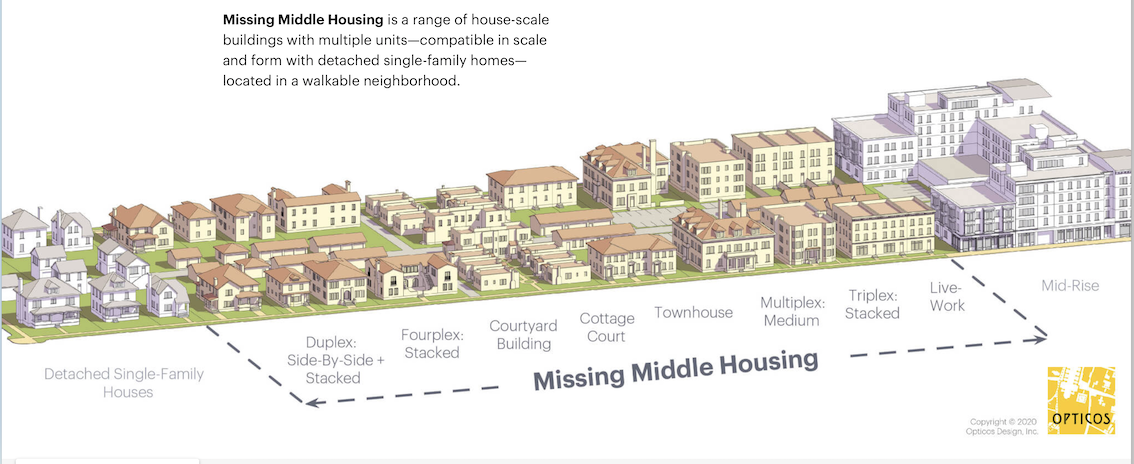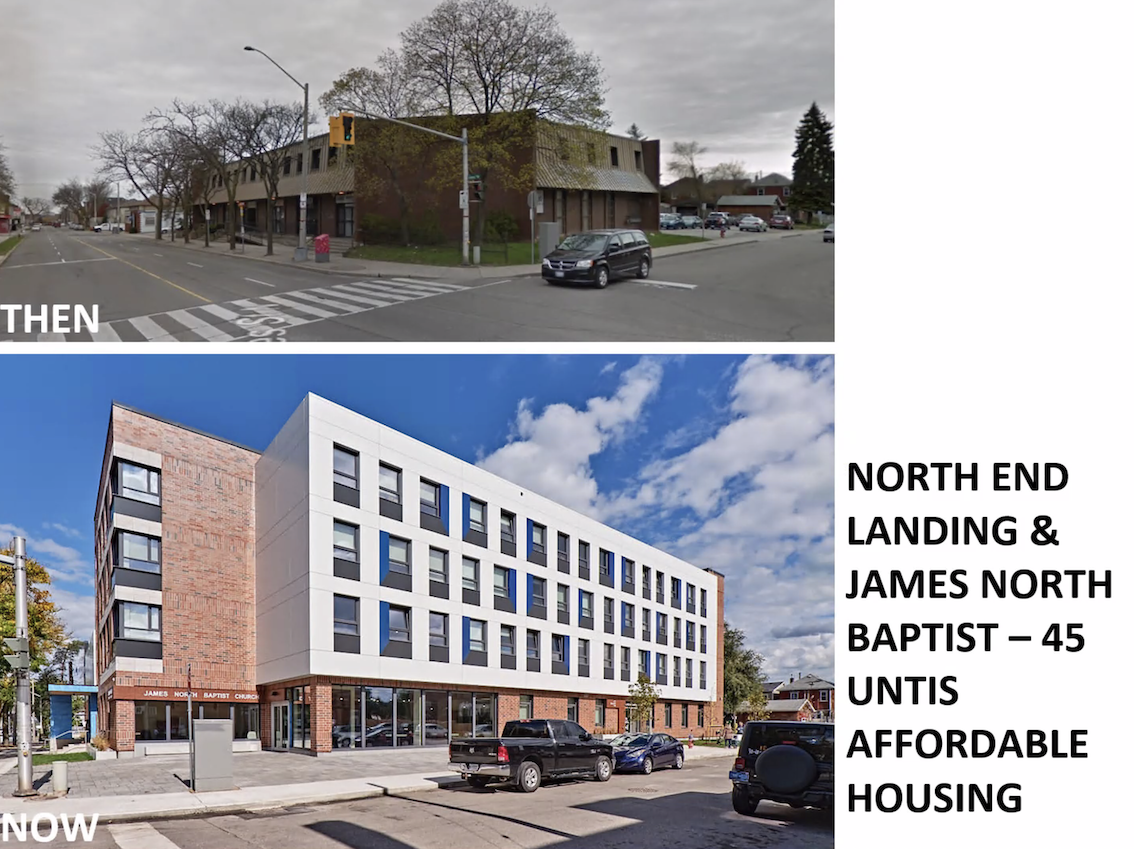
Emma Cubitt is a principal from Invizij Architects Inc. Emma, a graduate of the University of Illinois and Waterloo has practiced architecture for the past 15 years. She is passionate about social justice and inclusion and has specialized in livable small spaces. Her personal interests include biking, supporting co-operatives (The Mustard Seed) and laneway housing. Emma began her talk by reviewing some statistics regarding the cost of housing in Hamilton today. The average price of a single family house is over $800k and a condominium is $475k. These prices also put pressure on the cost of rental units. A one bedroom apartment on Kijiji is averaging $1500; a two bedroom is $1700. If one uses 30% of income as the money dedicated to housing (a CMHC guideline) then in order to purchase a condo one requires an annual income of $100,000 and a down payment of $25,000 ( bare minimum). The average income in Hamilton is slightly more than $75,000/year. They are barely able to afford owning a condo. However, many people make much less than that amount of money. How do they find housing security?
Compounding the challenge of price is the further problem of the high number of vacant buildings, and empty lots in the city. Emma suggested that the owners of these properties may have chosen to keep them underused hoping to ride the wild real estate market and sell them for higher prices rather than invest in them. In addition, it is easier for large developers to obtain financing for new large buildings than it is for smaller independent groups to get financing for retrofitting and renovation. Lastly, although there are large new condo buildings in downtown Hamilton, it appears that a number of units are not occupied. The units have been bought as speculative investments, not as potential rental housing.
Vacant property is not a problem unique to Hamilton. Other cities like Vancouver and Toronto also face a housing shortage. Their city politicians passed a Vacant Home Tax with a view to deter vacancy. In Hamilton, Councillor Nann has proposed such a tax. Another possible solution to the housing shortage is to revisit ideas about urban development. Rather than expanding the urban boundaries to build more single family houses, Emma (and others) propose greater densification and infilling of existing housing stock. This would entail the development of smaller scale projects in existing neighbourhoods, from duplexes to small multiplexes—a concept architects refer to as “the missing middle”.

Emma then presented several slides of projects that reflect the successful execution of these values and ideas.

The Perkins Centre, once the site of a dilapidated bar and rooming house, is now a 40 unit apartment and community centre. The McQuesten Lofts, the former location of the George and Mary’s Banquet Hall is now 107 rental units and the home of the new Parkdale branch of the HPL. Another example is James North Baptist Church where 45 rental units coexist in a mixed use community building that includes the parish of the Church. These are only a few examples of the creative projects that have been accomplished. Many of these renovated buildings are built to Passive Housing Standards – a level that exceeds the traditional building code and supports “Net Zero Energy by 2030” goals. In these dwellings there is more insulation, thermal bridging and heat pumps.

Indwell, a Christian charity that creates affordable housing communities that support people seeking health, wellness and belonging, is the key driver in a number of renewals Emma described. Their rental units provide low end of market housing for the vulnerable (financial, social, emotional, physical) and each site also provides additional personal resources such as counselling, physiotherapy, behaviour therapy and health care. In other words, the Indwell buildings provide people with a full suite of supports. Given that many of the renters are “first timers” and often recipients of OSDP, these additional options are life changing and life affirming.
Small scale private developers are also helping to fill the missing middle gap. One such example is the Hughson Church conversion. Emma noted that empty Church buildings have become an excellent property source and starting point in existing neighbourhoods. Her final example of an innovative private development was a S.D.U. (Secondary Dwelling Unit) in a laneway. The City of Hamilton approves of urban infill and technically supports “laneway” buildings if they are at least 270 square metres and there is access for emergency vehicles to enter and leave. Of course, securing building permits in Hamilton is still a challenging process and people with innovative ideas must also have strong wills and determination to get to the final product.
There were a number of questions and favorable comments from our club members. Most significantly, Dave Carson let everyone know that individuals may support Indwell’s work with a promissory note (see http://www.Indwell.ca).
In addition, please consider letting your City Councillor know your views on the update to the municipal plan. If you did not receive the paper survey, you have until Saturday to do this (see http://www.ssho.ca). Be sure to read the options carefully. The city staff’s recommendation of “ambitious density” folds 3300 acres of rural land (farmland) in Elfrida and Glanbrook into the urban area. The second option is to keep the existing urban boundaries and support denser forms of housing within the city.